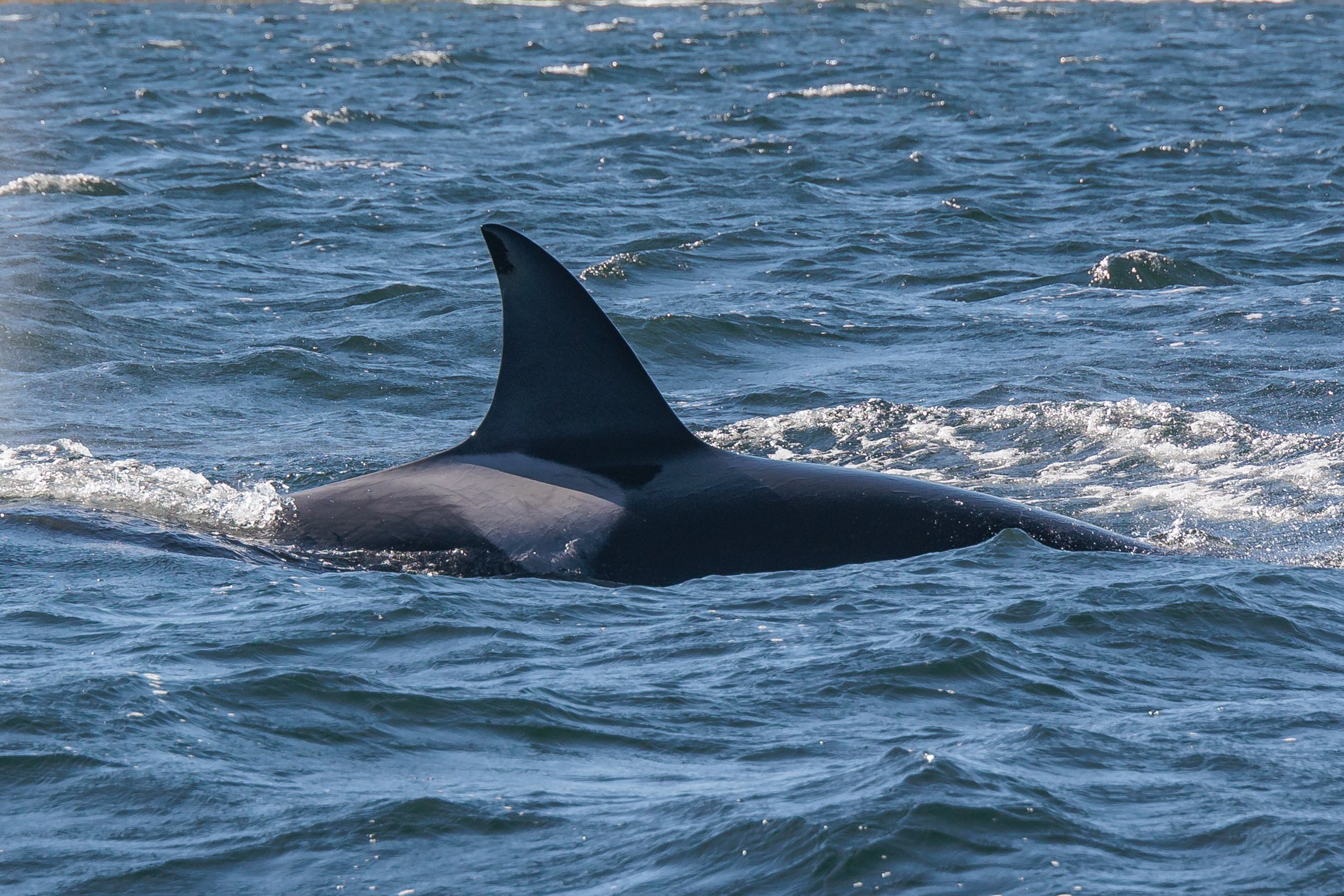August 16, 2023 10:30 AM - A whale-y good party!
It’s always a whale-y good day when we get to go out on the water and spot some whales, but this day in particular was great. We were able to catch up with the T-party that was first spotted yesterday who hadn’t made it too far yet. It was 4 full pods and one lone whale spending time together, for a total of 26 whales present. The following whales were present:
T002C Tasu (1989)
T002C1 Rocky (2002)
T002C3 Lucy (2011)
T002C5 (2020 calf)
T034 Grace (~1969)
T034A Pachamama (2007)
T034B Sonder (2017)
T065A5 Indy (2014)
T137 Loon (~1984)
T137A Jack (2002)
T137B Tempest (2006)
T137D Wright (2012)
T037 Pizzafin/Rocky III (1979)
T037B Harald (1998)
T037B1 Lance (2012)
T037B3 (2022 calf)
These whales were only about 20 minutes from our harbour today, just approaching the North end of Gabriola island. There was lots of excitement during this gathering of whales, with breaches, tail slapping, a quick hunt, and then travel.
Most of the time we see orca they are travelling, just trying to get from point A to point B. They are constantly on the move due to the fact that they are hunting intelligent prey in other marine mammals. If they stay in one spot too long, the prey get wise to it and they won’t have as much success in their hunts. This also contributes to Transient / Biggs orca typically having smaller pod sizes than the other ecotypes. This helps with their stealth, since the more members are present, the less likely they are to sneak up and ambush their prey.
During a t-party like today though, feeding isn’t their main concern, it is all about socializing! These meeting are a fin-tastic time for the whales to socialize with others who aren’t inside their family group. This not only expands their social behaviour, but it can also potentially be a breeding oppertunity since that requires going outside your own pos to avoid inbreeding. Interestingly, there is some new research being conducted into the genetics of the Transient / Biggs orca, so hopefully that can provide some more interesting insight into breeding and social interactions for them.
After spending some time with this group, we left them to their partying to see if we couldn’t find some other wildlife. We travelled south to Stinky Rocks were we saw a ton of wildlife! We got to see not only the larger playful stellar sea lions having a blast fighting on the rocks, but also the smaller, more composed Harbour Seals. Both of these species are pinnepids, or fin-footed animals, although they look quite different. They have a huge size difference, with the Steller Sea lions reaching up to 2800 pounds, while the Harbour Seals will only get to be about 300 lbs. Even with the size difference both of these species are on the menu for the Transient / Biggs orca, although not proportionally. The little harbour seals make up about 80% of the orcas diet, while Sea Lions share the other 20% with porpoises.
On stinky rocks we were also lucky enough to find A great Blue Heron and a River Otter sharing a rock together! The more you look at a biodiversity hotspot like this, the more species you will start to pick out.
Finally the trip concluded by taking a look at the large, impressive sandstone cliff system of the Gabriola Bluffs. This is another area that has a lot of species that call it home, including the Cormorants that typically steal the show. These medium sized black birds are some of the best swimmers that we have in our water, with dives being recorded up to 125 feet deep! They will be breeding and nesting on these cliffs during the summer, before the young will fledge and start their own lives. It’s a great way to end the tour!
Our Marine Naturalists Cheyenne Brewster, Vanessa Vereschahen, and Des Poier captured some amazing moments from the trip, which can all be viewed below.
Wright enjoying a wavy day. Photos by Des Poirier.
Indy is always down for a good party! Photos by Des Poirier.
Back flip! Photos by Des Poirier.
Jack next to a slapping tail. Photos by Des Poirier.
Tail slaps are one of the ways our orca communicate. Photos by Des Poirier.
Jack is an impressive male. Photos by Des Poirier.
Party time! Photos by Des Poirier.
This ladies are close to the rocks, perhaps looking for some lunch? T037A Volker and T137D Wright. Photos by Des Poirier.
A miniature breach! Photos by Des Poirier.
Tempest coming down with a splash. Photos by Des Poirier.
Wright coming out for a breach. Photos by Des Poirier.
Wright porpoising out of the water. Photos by Des Poirier.
Do you see the notches in Jack’s fin? This is one of the ways we can identify individuals. Photos by Des Poirier.
The eyepatch is another way to identify our whales, each one is unique. Photos by Des Poirier.
Tempest is the only one in her family with no easy notches in her fin for fast identification. Photos by Cheyenne Brewster.
A nice tail slap. Photos by Vanessa Vereschahen.
A beautiful breach. Photos by Vanessa Vereschahen.
Scratching an itch. Photos by Vanessa Vereschahen.
A young stellar sea lion showing off how handsome he is. Photos by Des Poirier.
Stellar sealions scratching their face. Photos by Des Poirier.
Harbour seal mom with her pup. Photos by Des Poirier.
A harbour seal watching us. Photos by Des Poirier.
Female harlequin ducks resting at low tide. Photos by Des Poirier.
A turkey vulture coming in for a landing. Photos by Cheyenne Brewster.
A river otter and great blue heron relaxing on a rock. Photos by Cheyenne Brewster.
Cormorants hanging out on a ledge. Photos by Des Poirier.
The new Vancouver to Nanaimo ferry. Photos by Cheyenne Brewster.



























